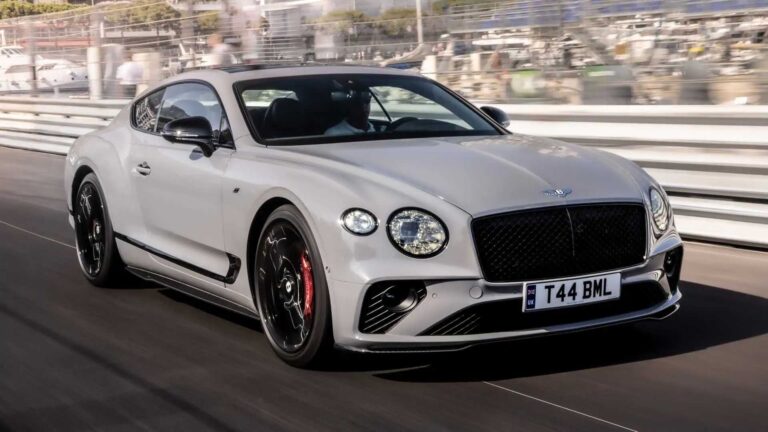The Evolution of the Mazda3: A Stylish and Reliable Compact Car
When it comes to compact cars, the Mazda3 has consistently been a top contender. Since its debut in 2003, the Mazda3 has undergone several updates and redesigns, solidifying its reputation as a stylish and reliable choice for consumers. In this article, we will explore the evolution of the Mazda3, from its inception to the present day, highlighting its key features, performance, and overall impact on the automotive market.
The Early Years: 2003-2009
The first-generation Mazda3 made its debut in 2003, replacing the popular Protegé model. It was available in both sedan and hatchback body styles, offering versatility to consumers. The Mazda3 quickly gained attention for its sporty design, responsive handling, and fuel-efficient engines. With options for a 2.0L or 2.3L engine, the Mazda3 appealed to a wide range of drivers, from daily commuters to driving enthusiasts.
One of the key factors that set the Mazda3 apart from its competitors was its focus on driving dynamics. The car’s precise steering and agile handling made it a joy to drive on both city streets and winding roads. Additionally, the Mazda3 offered a well-crafted interior with quality materials and a range of modern features, such as a premium sound system and Bluetooth connectivity. These early models laid the groundwork for the Mazda3’s success, establishing it as a standout in the compact car segment.
The Redesign: 2010-2013
In 2010, Mazda introduced the second generation of the Mazda3, building on the strengths of the original model while addressing areas for improvement. The exterior received a refreshed look, with a more sculpted body and updated front grille, giving the car a more aggressive and modern appearance. Under the hood, the Mazda3 received a new 2.0L engine option, further improving fuel efficiency without sacrificing performance.
Inside the cabin, the Mazda3 received a significant upgrade in terms of technology and comfort. The infotainment system was updated to include a larger touchscreen display and integrated navigation, bringing the car in line with the latest industry standards. The interior also saw improvements in material quality and overall refinement, giving the Mazda3 a more premium feel compared to its predecessors.
One of the most notable additions to the second-generation Mazda3 was the introduction of Skyactiv technology, which focused on optimizing the car’s performance and fuel economy. This marked a significant step forward for the Mazda3, showcasing the brand’s commitment to innovation and sustainability.
Modern Innovations: 2014-Present
In 2014, Mazda unveiled the third generation of the Mazda3, further refining its design and technology to meet the evolving demands of consumers. The exterior received a more aggressive and dynamic styling, with sleek lines and a bold front fascia that captured attention on the road. The Mazda3 also incorporated advanced safety features, such as lane departure warning and automatic emergency braking, setting a new standard for the compact car segment.
Under the hood, the Mazda3 introduced the Skyactiv-G engine, delivering impressive power and fuel efficiency. The car’s handling was also enhanced, thanks to improvements in chassis dynamics and suspension tuning. The interior of the Mazda3 continued to impress, with a driver-focused cockpit and premium materials throughout the cabin. The addition of advanced infotainment features, such as Apple CarPlay and Android Auto, further elevated the driving experience.
As the automotive industry continues to embrace electric and hybrid vehicles, Mazda has also made strides in this direction with the introduction of the Mazda3 Hybrid. This eco-friendly variant retains the stylish design and engaging driving dynamics of the traditional Mazda3 while offering improved fuel efficiency and reduced emissions.
The Mazda3’s Impact on the Market
Throughout its evolution, the Mazda3 has made a lasting impact on the automotive market, setting a high standard for compact cars in terms of design, performance, and technology. Its reputation for reliability and driving enjoyment has earned it a loyal following among consumers, with strong sales figures and numerous industry accolades to its name.
Furthermore, the Mazda3 has played a pivotal role in shaping Mazda’s brand image, showcasing the company’s commitment to innovation and craftsmanship. By consistently pushing the boundaries of what a compact car can offer, Mazda has solidified its position as a forward-thinking and competitive player in the automotive industry.
The Future of the Mazda3
Looking ahead, the future of the Mazda3 looks promising, with continued advancements in technology and sustainability. As the automotive landscape evolves, we can expect the Mazda3 to adapt and thrive, maintaining its status as a top choice for consumers seeking a compact car that delivers on all fronts.
With its striking design, engaging driving dynamics, and cutting-edge features, the Mazda3 is well-positioned to continue making an impact in the market for years to come. Whether it’s in the form of hybrid technology, advanced safety systems, or further refinements to its design, the Mazda3 is poised to remain a standout in the compact car segment.
In Conclusion
The Mazda3’s journey from its early days to the present has been marked by innovation, style, and a commitment to delivering an exceptional driving experience. Its evolution reflects Mazda’s dedication to pushing boundaries and redefining what a compact car can achieve. As the Mazda3 continues to captivate consumers with its blend of performance, design, and technology, it’s clear that this iconic model will remain an influential force in the automotive industry for years to come.
,refusal: null








Leave a Comment